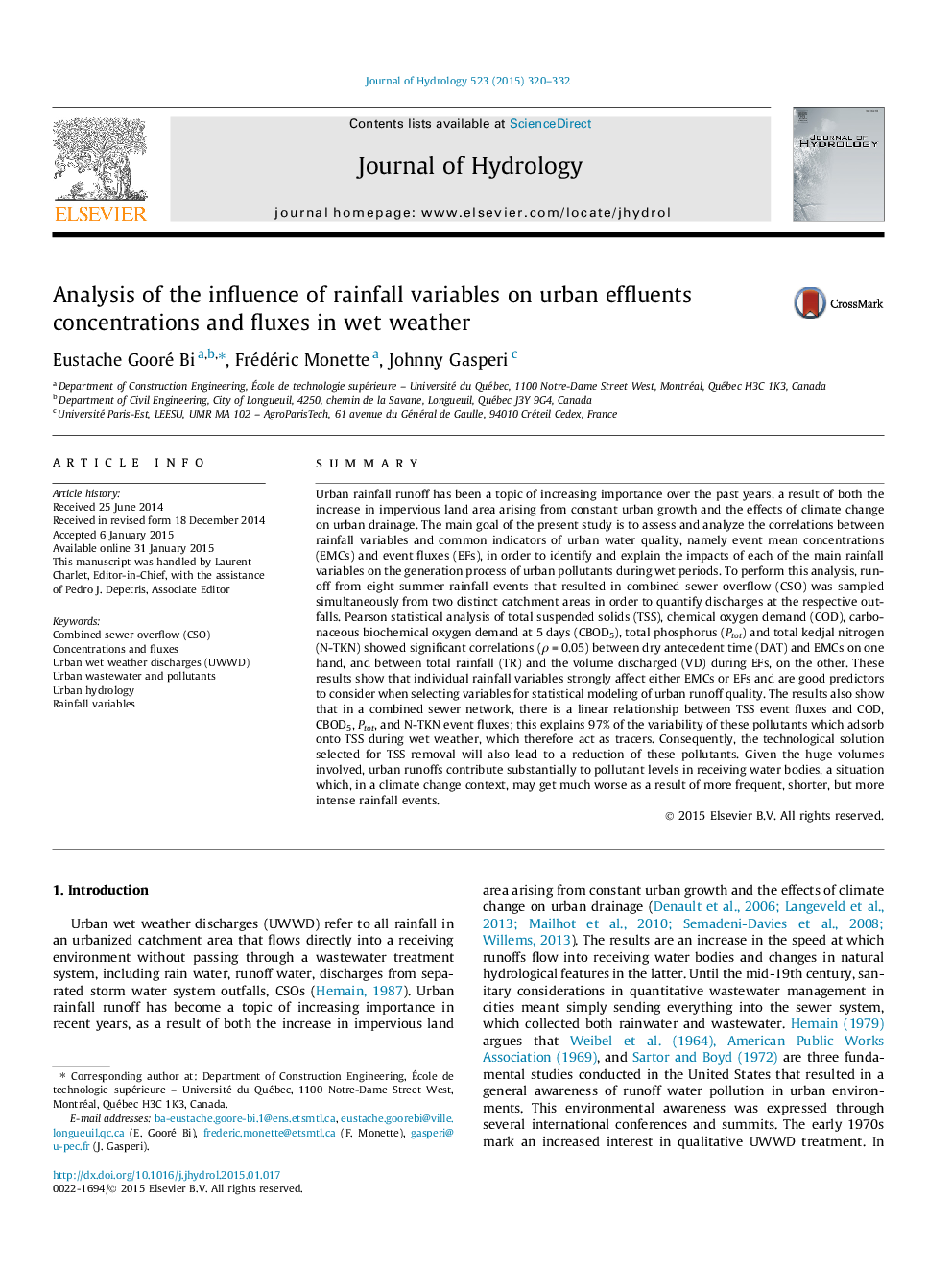| کد مقاله | کد نشریه | سال انتشار | مقاله انگلیسی | نسخه تمام متن |
|---|---|---|---|---|
| 6411693 | 1629927 | 2015 | 13 صفحه PDF | دانلود رایگان |
- EMC/EF is significantly higher in CSO discharges than in storm water discharges.
- DAT is the rainfall variable that best predicts EMC explaining 61% of variability.
- TR (69%) and VD (57%) are the rainfall variables that best predict EF values.
- TSS variability accounts for 97% of EF variability for COD, CBOD5, Ptot and N-TKN.
SummaryUrban rainfall runoff has been a topic of increasing importance over the past years, a result of both the increase in impervious land area arising from constant urban growth and the effects of climate change on urban drainage. The main goal of the present study is to assess and analyze the correlations between rainfall variables and common indicators of urban water quality, namely event mean concentrations (EMCs) and event fluxes (EFs), in order to identify and explain the impacts of each of the main rainfall variables on the generation process of urban pollutants during wet periods. To perform this analysis, runoff from eight summer rainfall events that resulted in combined sewer overflow (CSO) was sampled simultaneously from two distinct catchment areas in order to quantify discharges at the respective outfalls. Pearson statistical analysis of total suspended solids (TSS), chemical oxygen demand (COD), carbonaceous biochemical oxygen demand at 5Â days (CBOD5), total phosphorus (Ptot) and total kedjal nitrogen (N-TKN) showed significant correlations (ÏÂ =Â 0.05) between dry antecedent time (DAT) and EMCs on one hand, and between total rainfall (TR) and the volume discharged (VD) during EFs, on the other. These results show that individual rainfall variables strongly affect either EMCs or EFs and are good predictors to consider when selecting variables for statistical modeling of urban runoff quality. The results also show that in a combined sewer network, there is a linear relationship between TSS event fluxes and COD, CBOD5, Ptot, and N-TKN event fluxes; this explains 97% of the variability of these pollutants which adsorb onto TSS during wet weather, which therefore act as tracers. Consequently, the technological solution selected for TSS removal will also lead to a reduction of these pollutants. Given the huge volumes involved, urban runoffs contribute substantially to pollutant levels in receiving water bodies, a situation which, in a climate change context, may get much worse as a result of more frequent, shorter, but more intense rainfall events.
Journal: Journal of Hydrology - Volume 523, April 2015, Pages 320-332
